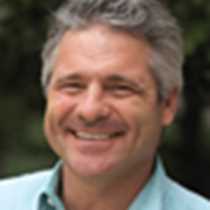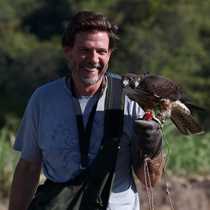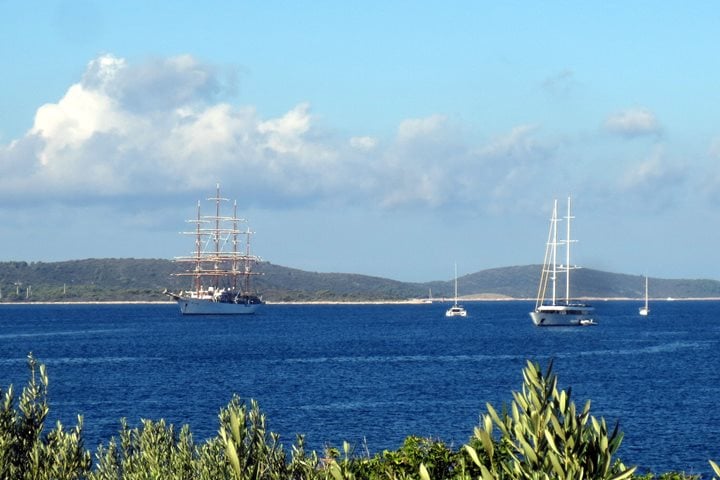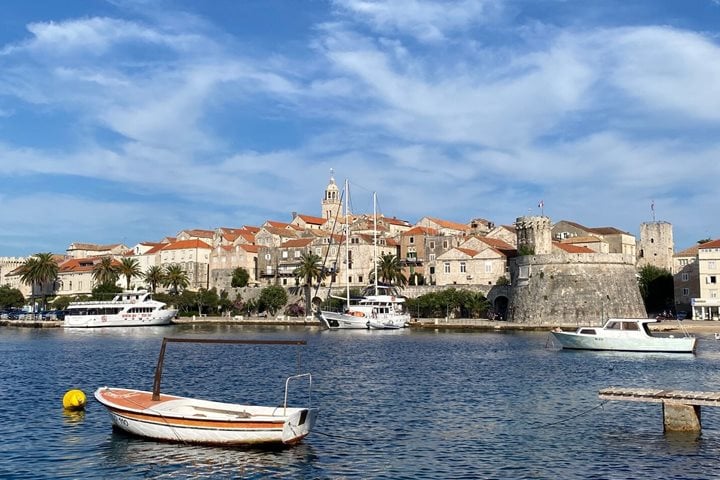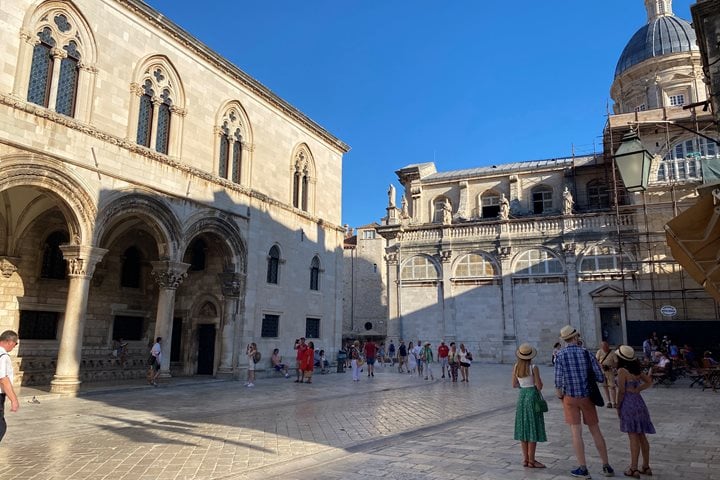Our first sunrise aboard the legendary Sea Cloud found us rounding the convergence of the wild Aegean Sea and the gentler more predictable Ionian. Sea Cloud’s 178-foot high main mast prevents us from passing through the Corinth Canal, so we must round the entire Peloponnesus peninsula. We passed the southern island of Kythira at first light, and powered determinedly to the west to position ourselves for our first day sailing.
On a square rigger it is the Captain who is completely responsible for the sail plan. He must consider where he wants to get to by the end of the day, the probable wind direction and speed through the day, factors such as currents or cargo shipping lanes, and the ever-changing priorities of an anxious expedition leader. He then calculates his estimated speed under different sail configurations, and finally tells the navigation officer the desired 0800 position from which we will set sail. While we actually needed to head to the north against the prevailing winds for the following day at Olympia, we had built time into the itinerary to sail an opposite course if necessary. The purpose of a square rigger is not to set all sails—some of which block or cancel out the effects of others—but to offer a repertoire of sail combinations to maximize sailing efficiency in any conditions. Since it was our first day on board, Captain Komakin wanted to set an impressive show of sail, but at the same time we did not want to go too fast or too far to the south. In addition, we were just north of the busy Mediterranean shipping lane below the Peloponnesus, so sailing to the south would mean crossing an ongoing flow of cargo ships that are supposed to know that a sailing vessel has the right of way. And finally, the wind was supposed to increase and turn slightly more to WNW in the afternoon, which would drive us even further south.
With all this in mind, Captain Komakin called the sail orders to the bosun and at 0800 the deck crew “Hit the Rig!” Sailors scurried aloft on the windward ratlines and out on the yardarms to loose the gaskets and prepare the sails. Then, in a dizzying flurry of activity, lines and chains started moving, sailors started calling, yards started lifting, and canvas started billowing. We the uninitiated were awestruck with the action, and we suddenly realized that the ship was moving without the sound of the engines. We were sailing.
A moderate northwesterly breeze held steady, but Captain Komakin held us tight on a beam reach to keep our speed down and minimize our southward progress with all square sails set. A square rigger can only sail about 70 degrees into the wind, so we still had to sail to the southwest. It was wonderful, and we could not believe that we were part of something that most of us had thought was a thing of the distant past. This was the stuff of dreams, yet here we were, on a tall ship under full sail. Our expedition leader had advised that we shouldn’t worry about taking pictures on the first day and instead get a feel for the sailing procedures and for Sea Cloud, finding our favorite places and angles. Who was he kidding? We all fired shot after shot as there was action and seductive composition every time you turned your head. We were all appreciative of our photo instructor Alberto Montaudon’s introduction to photographic techniques to help us with our approach to this extraordinary multidimensional landscape.
After lunch the wind increased as the captain had expected, and our sailing speed increased to almost 6 knots. It was great! But now we were sailing further and faster south than we really wanted, and a square rigger has no brakes. The crew hit the rig at 1700 to douse the sails, and an hour later Captain Komakin introduced his officers to widespread applause as we began to get appreciation for the magnificence of a true sailing ship as Sea Cloud. Let’s do it again tomorrow!



